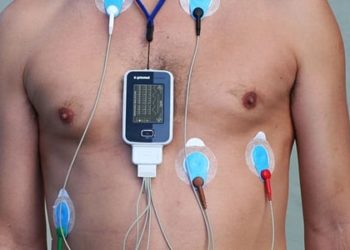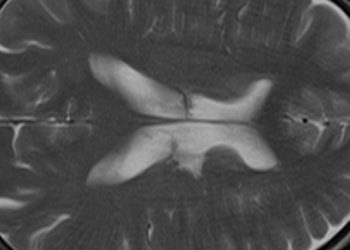Time from symptom onset may not predict infarct volume in stroke
1. In a prospective cohort study of 91 patients with anterior circulation ischemic strokes that underwent magnetic resonance imaging (MRI), time of stroke onset was not significantly associated with size of core infarct volume on MRI.
2. The presence of collateral circulation was significantly associated with decreased infarct volume.
Evidence Rating Level: 2 (Good)
Study Rundown: The management of acute ischemic stroke requires a timely diagnosis as administration of intravenous tissue plasminogen activator (tPA) within 4.5 hours of symptom onset or early endovascular therapy has been shown to improve outcomes. However, it is unclear whether important predictors of clinical outcome, such as infarct volume on MR imaging, have a similar time-dependent relationship. The purpose of this trial was to determine the independent predictors of infarct volume on MR imaging. This trial retrospectively analyzed 91 consecutive patients who presented with anterior circulation ischemic strokes that underwent computed tomography (CT), CT angiography (CTA), and MRI within 6 hours of presentation and compared infarct volumes between those that received imaging from 0-3 hours and 3-6 hours after presentation. At the conclusion of the trial, the median infract volume on MR imaging was similar between the 2 time points. Furthermore, there was no significant association between time of onset of symptoms and MR imaging infarct area. Multivariate analysis demonstrated that the presence of collateral circulation on CTA was an independent predictor of smaller MRI infarct volume. The results of this study support the hypothesis that time from stroke onset do not determine the size of core infarct and that underlying anatomic factors may play a role in determining the size of initial infarction and subsequent at-risk or so-called penumbral tissue. However, the study is limited by the retrospective design and small sample size as well as a lack of accurate record of time of symptom onset. Additional large, prospective trials are needed to verify this association, and to determine which other factors, if any, may contribute to greater core infarct size.
Click to read the study in AJNR
Relevant Reading: Time and diffusion lesion size in major anterior circulation ischemic strokes
In-Depth [prospective cohort]: This study was a retrospective analysis of 91 consecutive patients presenting with ischemic stroke in a single-center, acute stroke database from March 2008 to April 2013. The inclusion criteria were patients with anterior circulation strokes with MR imaging performed within 6 hours of symptom onset. All patients in the database received CT, CTA, and MR imaging for assessment of infarct volume and ischemic penumbra. The primary endpoint was size of ischemic infarct on MRI imaging between imaging from 0-3 hours versus 3-6 hours from onset. Size of ischemic infarcts were calculated from diffusion weighted imaging sequences read by 4 independent, blinded vascular neurologists. At the conclusion of the study, there were no differences in infarct volume between the 2 MR imaging time points (24.7mL vs. 29.4mL, p=0.906). There was no association between time of stroke onset and MR core infarct volume with ROC curve analysis (area under the curve = 0.509). Multivariate analysis of clinical characteristics demonstrated that collateral circulation on CTA (OR: 0.464; 95% CI: 0.3 to 0.8; p = 0.03) and prior histories of hyperlipidemia (OR: 11.0; 95% CI: 1.4 to 88.0; p = 0.023) were independent predictors of MR core infarct volume.
Image: PD
©2015 2 Minute Medicine, Inc. All rights reserved. No works may be reproduced without expressed written consent from 2 Minute Medicine, Inc. Inquire about licensing here. No article should be construed as medical advice and is not intended as such by the authors or by 2 Minute Medicine, Inc.







